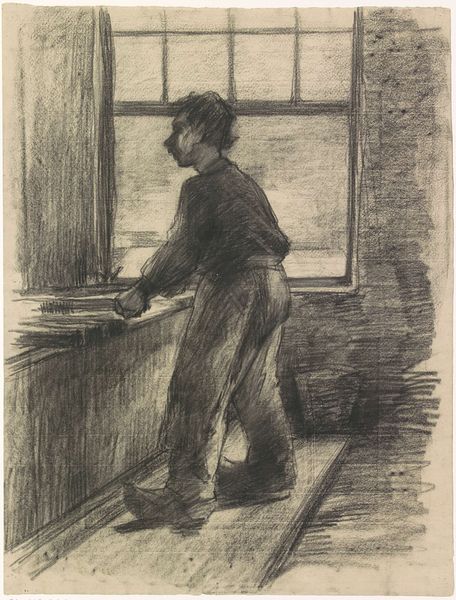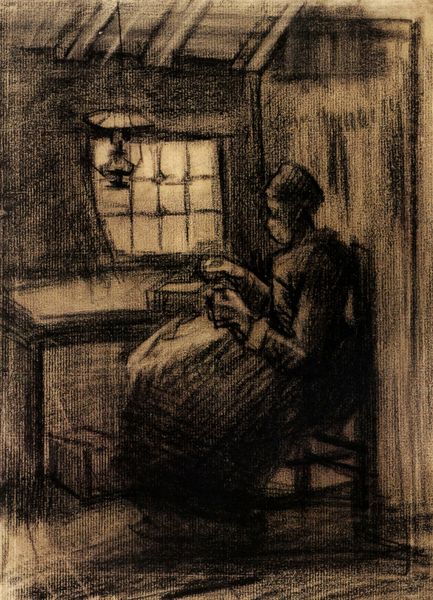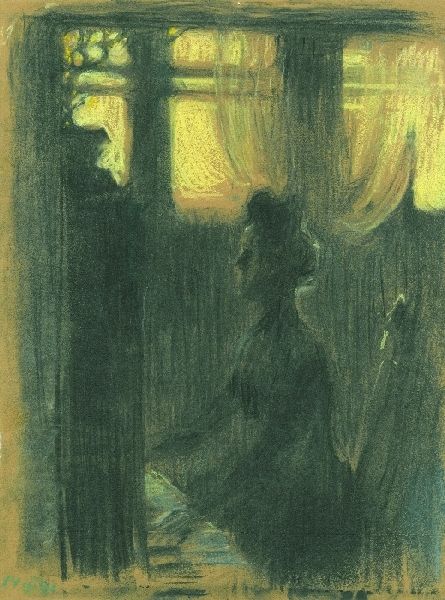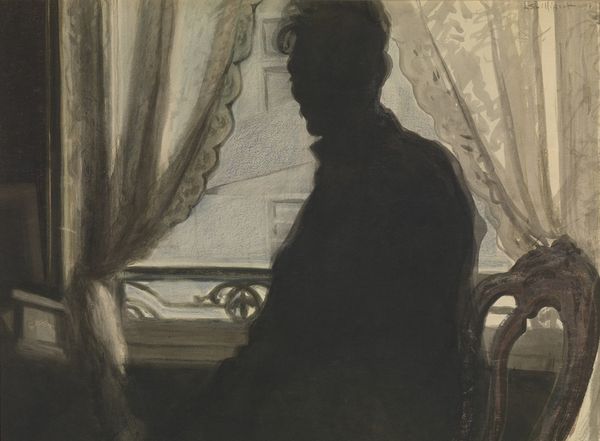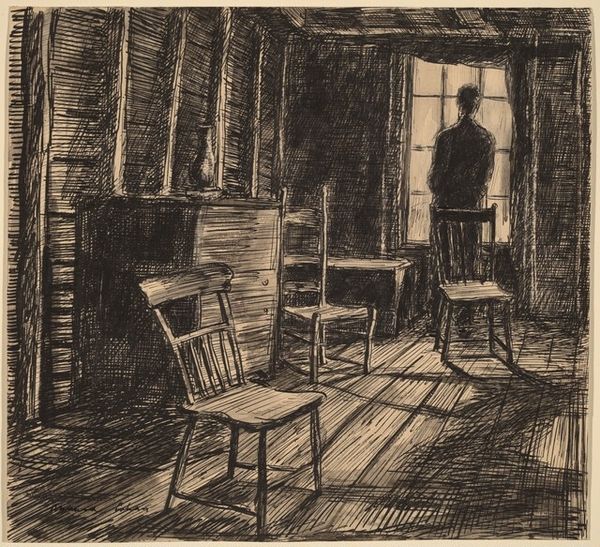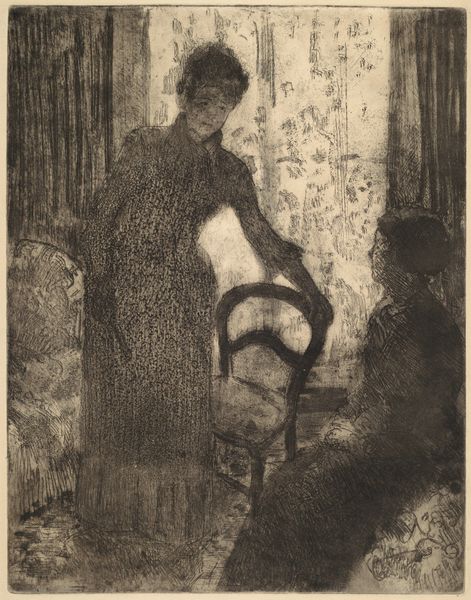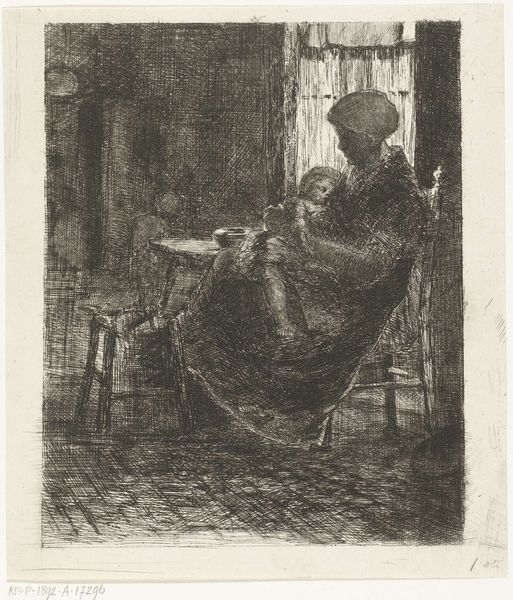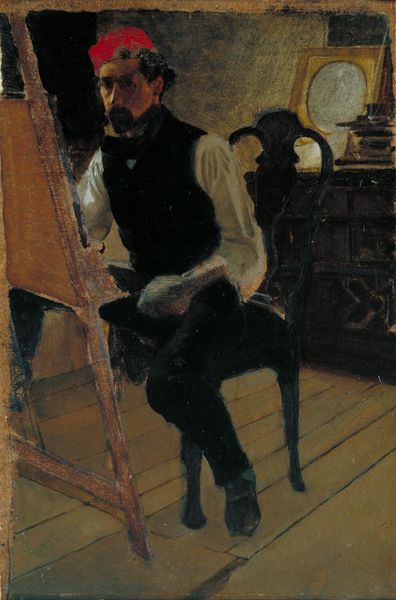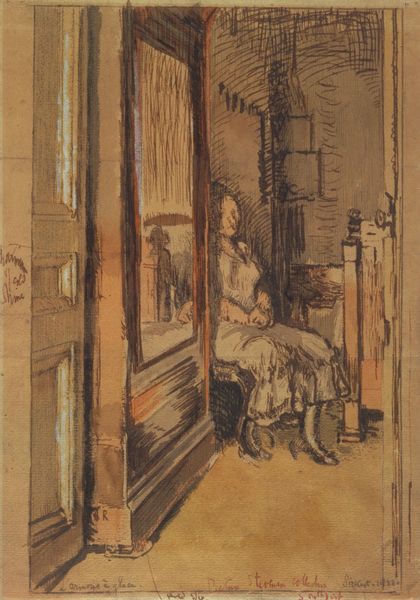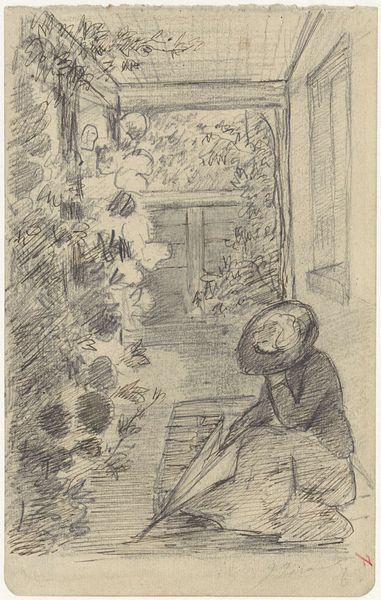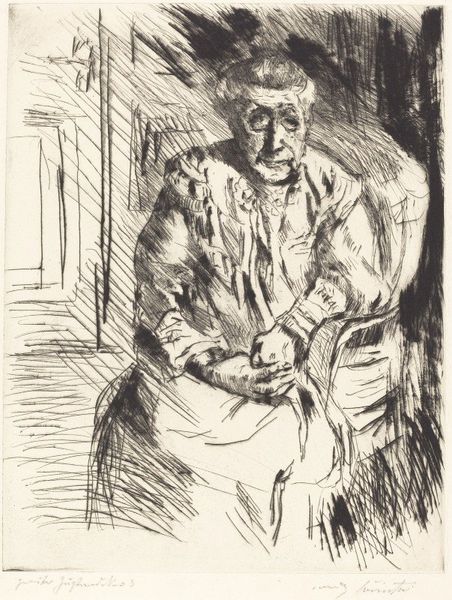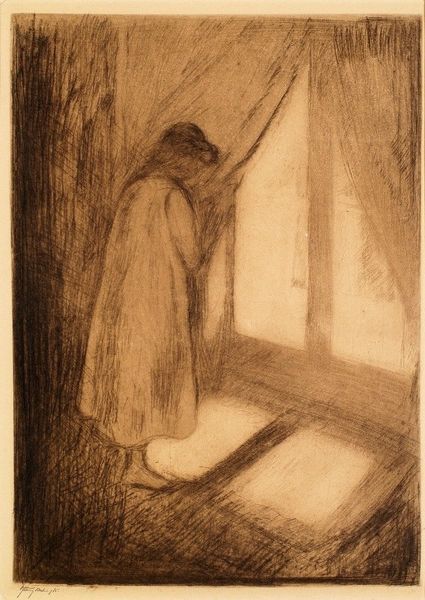
drawing, charcoal
#
portrait
#
drawing
#
impressionism
#
charcoal drawing
#
figuration
#
portrait drawing
#
genre-painting
#
charcoal
Copyright: Public domain
Editor: Here we have Vincent van Gogh's charcoal drawing, "Woman Cutting Bread," from 1885. It has such a somber, almost haunting feeling. What catches your eye when you look at it? Curator: Immediately, I think about the materiality of daily life for the working class. The charcoal itself, a readily available material, is used to depict the labor involved in preparing a simple meal. Notice the stark contrast – the play of light on the window versus the deep shadows engulfing the woman. How does the material representation reflect class divisions of that time? Editor: That's interesting. I hadn't considered the charcoal itself as a commentary. Does the genre itself – the domestic scene – factor into this? Curator: Absolutely. It pulls on the genre painting conventions while simultaneously stripping away any romanticism. The harsh lines and the lack of detail around her face depersonalizes the figure. It compels us to think about the means of food production. It also highlights the endlessness, and perhaps even the thanklessness, of this type of domestic labor, right? It speaks volumes about the lived reality of working-class women. Consider, how would the artwork's message shift if he had employed oil paints? Editor: It definitely feels rawer and more immediate because it’s a drawing. Oil paint would’ve made it… I don’t know, maybe too polished, too removed from the subject. Curator: Precisely. The rawness of the charcoal forces us to confront the reality of the labor involved, not just the end product on a dining table. Editor: This has completely changed how I see the artwork. Thinking about the materials and the making process as part of the meaning. Curator: And by acknowledging those unseen labors, we honor those typically ignored contributions and begin questioning traditional hierarchies within art itself.
Comments
No comments
Be the first to comment and join the conversation on the ultimate creative platform.
